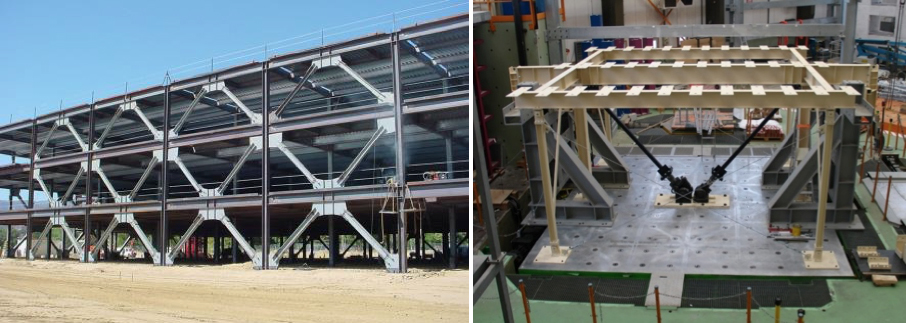Title of Project:
Investigation of Seismic Deformation Demand, Capacity and Control in a Novel Self-Centring Steel Braced Frame (SC-CBF)
Hosting Research Infrastructure:
IZIIS
No. of Users:
9
Team Leader:
Trinity College Dublin. Dept of Civil, Structural and Environmental Engineering Trinity College Dublin
Brian Broderick
Team:
National University of Ireland
Jamie Goggins, Suhaib Salawdeh, Edward Fagan
Department of Civil and Environmental Engineering, Imperial College London
Ahmed Elghazouli
University of Ljubljana
Primož Može
Trinity College Dublin. Dept of Civil, Structural and Environmental Engineering Trinity College Dublin
Breiffni Fitzgerald, Terence Ryan, John Hickey
Summary of Project:
Seismic design codes seek to limit structural displacements to minimise damage; however no explicit consideration is usually given to the state of the structure after the earthquake, which can be critical for re-occupancy, monetary losses and the speed that repairs can be carried out. This project will further the development of a novel system designed to control residual deformations in braced steel frames, creating more resilient structures.
An integrated experimental and numerical research programme will be completed, the central element of which will be a set of shake table experiments on single-storey self-centring concentrically braced frame (SC-CBF) models subjected to a variety of seismic actions. The aim of these tests will be to assess the effectiveness of a novel self-centring system in controlling global deformation demand in CBFs, including the sensitivity of SC-CBF response to ground motion characteristics. Correlative pre-test predictions and post-test simulations using pushover and time-history analysis will be carried out to support these experiments.
Brace member and connection details will be varied between experiments to investigate a range of structural properties relevant for European design practice. In each experiment, three separate tests will be performed with table excitations scaled to achieve performance levels corresponding to elastic response, brace buckling/yielding and brace fracture. The results will include residual frame and brace deformations, brace ductility demand and capacity; the influence of connection detailing on maximum and residual deformations; and measurements of effective stiffness and equivalent viscous damping in SC-CBFs. Numerical model validation will facilitate simulation of the seismic response of CBFs buildings with deformation control systems using a wider range of braces, connections and ground motions to support the evaluation and development of Eurocode 8 design guidance for CBFs.


